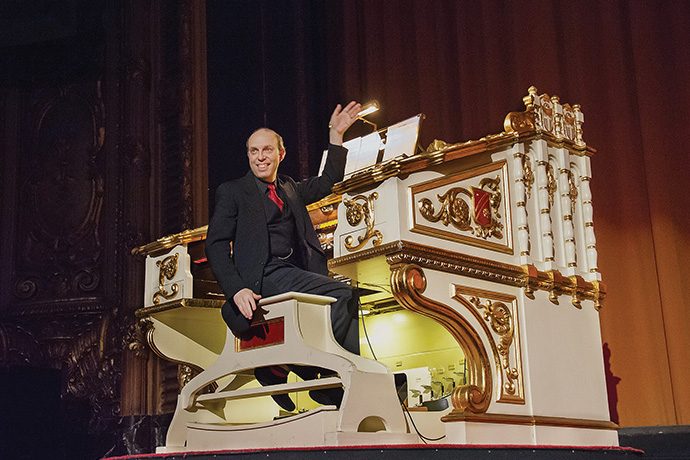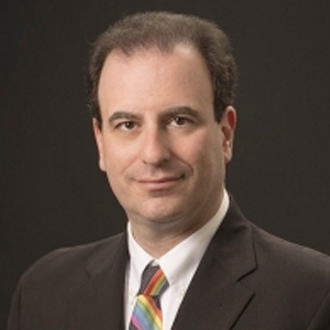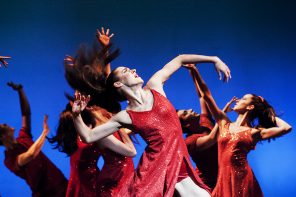Have you heard any good silent movies lately?
Contrary to popular belief, the silent movies were never truly silent. Back in the day, the absence of a film soundtrack was replaced by live musical performances with each theatrical screening. The diversity of the accompaniment varied depending on the theater — a single pianist or organist for a cozy neighborhood cinema, a small ensemble for a medium-size venue and a full orchestra for the grand movie palaces of that bygone era.
If there is a big-screen presentation of a silent movie today, there is an excellent chance that Ben Model will be at the keyboard for the live musical accompaniment. For more than three decades, Model — who teaches a course in silent film at Wesleyan University in Middletown, Connecticut, — has kept alive the multimedia tradition of the silent movie, offering original and innovative compositions to match the moods, emotions, action and shenanigans of yesteryear’s cinematic classics.
Manhattan-based Model is a resident film accompanist at The Museum of Modern Art and the Library of Congress’ Packard Campus Theater, and his passion for silent movie musical accompaniment has taken him to some far-flung and fascinating locales.
“Probably the most off-the-beaten-path place that I’ve played has been Tromsø, Norway,” he says. “It is above the Arctic Circle and has the oldest functioning movie house in Norway, built in 1916. They have a silent film festival every year, and I’ve played every year since 2006. Some travel writer dubbed Tromsø ‘the Paris of the North.’ I’ve never been to Paris, so I can’t make a comparison.”
Model discovered silent movies as a child in the late 1960s, when old Charlie Chaplin shorts played on TV. While attending New York University in the early 1980s, he volunteered to play a piano during the film studies department’s silent-movie screenings. The 16mm prints being used by the school came without musical soundtracks and Model felt that viewing the old films in total silence created an uncomfortable experience.
Today, the once-eager student who volunteered to play for his classmates recently became a star attraction in Hollywood, performing in late April for a screening of the 1928 classic “Show People” at the TCM Classic Film Festival in the legendary Egyptian Theatre. Across the Pacific, Model found his largest audience at the annual music and film festival held in Jecheon, South Korea.
“Two years ago, I performed outdoors in the summer by a lake with an audience of 3,000,” he recalls. “I played for Harold Lloyd’s ‘The Freshman’ and Buster Keaton’s ‘Steamboat Bill, Jr.’”
One unlikely location that has given Model a degree of stardom is Boise, Idaho, where he performs annually at the historic Egyptian Theatre on the venue’s original 1927 Robert Morton theater pipe organ. The Boise Philharmonic has licensed Model’s orchestral scores for their live accompaniment of silent film classics, and even the local school system knows Model’s work as sixth graders from the city’s public schools get special screenings of the silent comedy masterworks.
“Students love it once they get past the word ‘silent,’” Model observes. “Show a Buster Keaton film to 11-year-olds — when the lights go off and the film starts, they go for it. For them, it is a brand-new type of humor that nobody does at all.”
Although Model praises Boise for feeding his caffeine needs — “One of the things about Boise, there are tons of places to get good coffee” — a visit to the 2017 Buster Keaton Festival in Iola, Kansas, enabled Model to explore the neighboring town of Piqua, where Keaton was born in 1895. However, Model spent more time and had more lasting memories in Piqua than Keaton did.
“His parents were traveling through the town with a medicine show, had Buster and then moved on,” he says.
Perhaps the most poignant venues for Model’s shows has been at New York-area senior living facilities, where he performs during screenings of silent comedies. “They go over great,” he says. “The seniors say to me, ‘We don’t get to laugh like this.’ The most common question I get asked is, ‘When are you coming back?’”
Model also teams with film historians Bruce Lawton and Steve Massa on the Silent Clowns Film Series, a monthly program of silent movie screenings held during the summer and winter at the New York Public Library for Performing Arts at Lincoln Center in Manhattan. Outside of the theater, Model is an active film preservationist and entrepreneur. His Undercranked Productions DVD label has offered restored versions of rare silent films starring Lon Chaney, Marion Davies and the Spanish-born comedy star Marcel Perez, plus the “Accidentally Preserved” series of long-lost silent productions that were recovered from 16mm and 9.5mm prints owned by private collectors.
And, as if that’s not enough, Model plays a live accompaniment to the films being studied in his course at Wesleyan. However, his long years of showmanship needed to be realigned to
the classroom.
“In the first semester, I had to teach myself to stop saying, ‘Thank you for coming,’ which I do for every show,” he says, with a not-silent laugh.
For more, visit silentfilmmusic.com.





